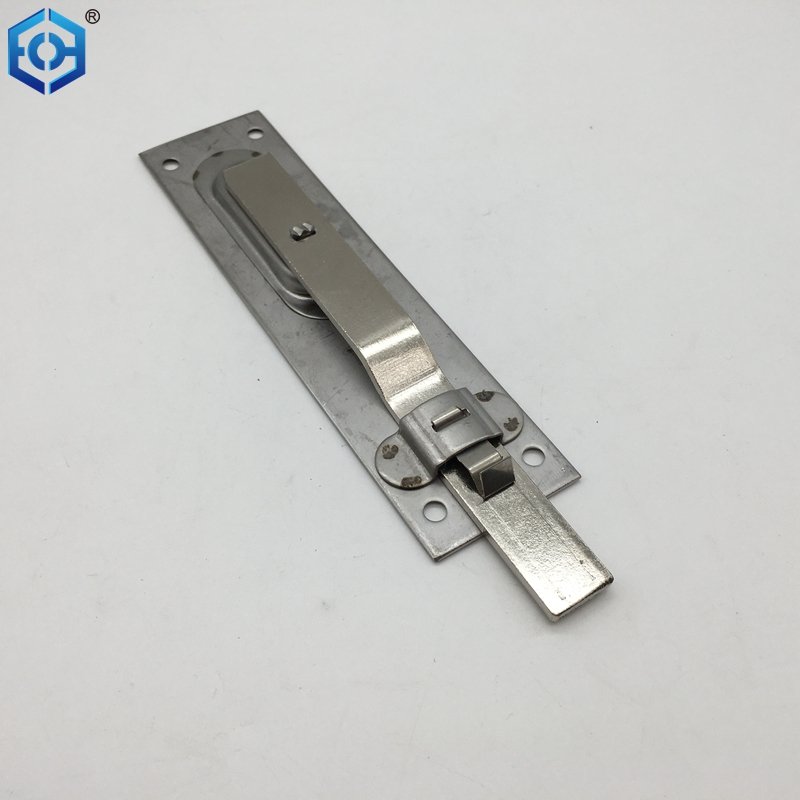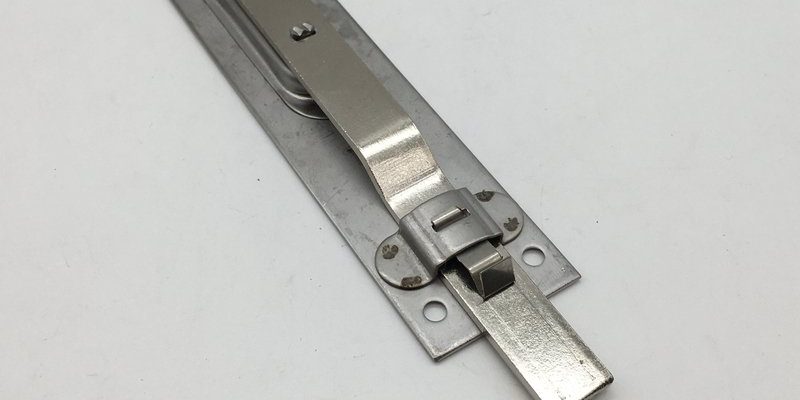
Imagine you’re augmenting your door’s defense much like a knight donning extra armor. A surface-mounted slide bolt acts as that extra layer. It adds security without needing to replace your entire door. Plus, it’s a project you can tackle on a Saturday morning with just a few tools. Let me explain how this works and why it matters.
What Is a Surface-Mounted Slide Bolt?
A surface-mounted slide bolt is a type of lock that you install on the surface of a door. Unlike traditional deadbolts that require drilling into the door, these bolts sit on the outside. When you slide the bolt into the strike plate on the door frame, it secures the door against forced entry.
This type of lock is a popular choice for many homeowners because it’s easy to install and provides an added layer of protection against unwanted access. You might find these bolts in various styles and materials—some are made of sturdy steel for maximum strength, while others may be made of lighter materials that are still effective.
When choosing a slide bolt, consider where you’ll install it. You want to ensure it’s in a position that’s easily accessible from inside your home but also not visible or reachable from the outside. This way, you blend security with convenience.
Benefits of Retrofitting With a Slide Bolt
You might be wondering why you’d want to retrofit your door with a slide bolt in the first place. Here are a few compelling reasons:
- Enhanced Security: By adding a surface-mounted slide bolt, you’re giving your door that extra “lock” that makes it tougher to break in. It’s like having a backup for your existing locking system.
- Easy Installation: You don’t need to be a DIY expert to install a slide bolt. A few basic tools and you’re set. No need for professional help unless you want it.
- Cost-Effective: Compared to other security measures, surface-mounted slide bolts are relatively inexpensive. It’s an affordable way to bolster your home security without breaking the bank.
In addition, retrofitting with a slide bolt can also be a preventive measure. Think about it: when you make it harder for someone to enter your home, you’re less likely to become a victim of burglary. It’s a simple way to gain peace of mind, which is invaluable.
How to Choose the Right Slide Bolt for Your Door
Choosing the right slide bolt involves a few considerations. You want one that complements your door and provides the security you need. Here are some factors to keep in mind:
- Material: Look for a slide bolt made of durable materials like steel or brass. These will withstand force better than plastic models.
- Length: Ensure the bolt is long enough to secure properly into the strike plate but not so long that it becomes cumbersome to operate.
- Style: Aesthetics matter too! Choose a model that matches your door’s style—whether it’s modern, classic, or rustic.
Also, think about the mechanisms. Some slide bolts come with key locking features for added security. Others are just manual, which might be sufficient depending on where you live.
Installation Steps for a Surface-Mounted Slide Bolt
So, you’ve picked out your slide bolt and are ready to install it. What’s next? Here’s a step-by-step guide to help you through the process.
1. Gather Your Tools: You’ll need a drill, screws, a screwdriver, a pencil, and a level. Having everything handy will make the job smoother.
2. Choose the Placement: Decide where the bolt will go. It should be easy to reach from the inside but out of reach for someone attempting to break in.
3. Mark the Drill Holes: Once you’ve found the right spot, use a pencil to mark where the screws will go. Ensure it’s level; a crooked install can make it less effective.
4. Drill the Holes: Use your drill to make holes for the screws. Be careful not to drill too deep, and make sure they’re aligned with your markings.
5. Mount the Slide Bolt: Position the slide bolt and screw it into place. Ensure it operates smoothly; it should glide easily without sticking.
6. Install the Strike Plate: This part goes on the door frame. Use the same process—mark, drill, and screw it in securely.
It’s that easy! Now you’ve got a well-secured door that adds peace of mind.
Common Issues and Troubleshooting
Even the best installations can run into hiccups now and then. Here are some common problems you might face with your slide bolt, along with solutions to help you troubleshoot:
- Jammed Bolt: If the bolt doesn’t slide smoothly, it may be misaligned. Check to see if the bolt and strike plate are aligned. You might need to adjust the placement slightly.
- Loose Screws: If the bolt becomes wobbly, ensure all screws are tightened. Over time, screws can loosen, especially with frequent use.
- Rust or Corrosion: If you notice rust forming, consider using a protective spray or lubricating the bolt to maintain its functionality.
If these tips don’t resolve your issue, it might be time to reach out to a professional, but most problems can usually be fixed with a little DIY know-how.
Alternatives to Surface-Mounted Slide Bolts
If you’re still on the fence about slide bolts, there are other options to enhance your door security. Here are a few alternatives:
- Deadbolts: A classic choice, deadbolts offer a higher level of security but require more installation work.
- Chain Locks: These allow you to open the door slightly while still securing it, perfect for added security when answering the door.
- Electronic Locks: If you prefer modern tech, these locks can offer features like remote access and keypad entry.
Each option has its pros and cons, so think about what fits your lifestyle and needs best.
Retrofitting your door with a surface-mounted slide bolt is a great way to boost your home’s security without extensive renovations or costs. It’s an accessible DIY project many can handle in just a few hours. By taking the time to install a slide bolt, you’re giving yourself peace of mind, knowing you’ve added an extra layer of defense.
Whether you choose to go this route or explore alternatives, remember that home security is about making informed choices. So, next time you think about your home’s safety, consider a surface-mounted slide bolt. It could be the simple solution that makes all the difference.
